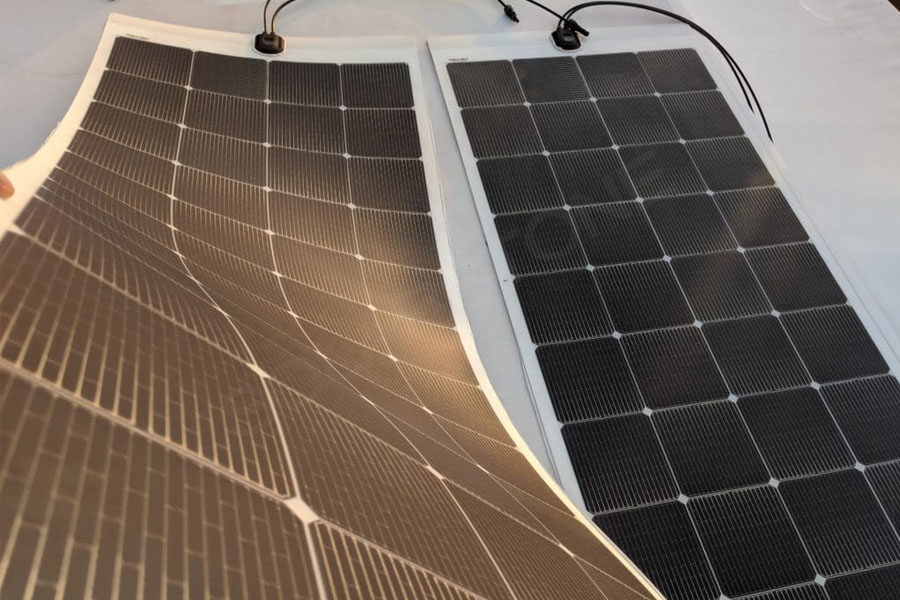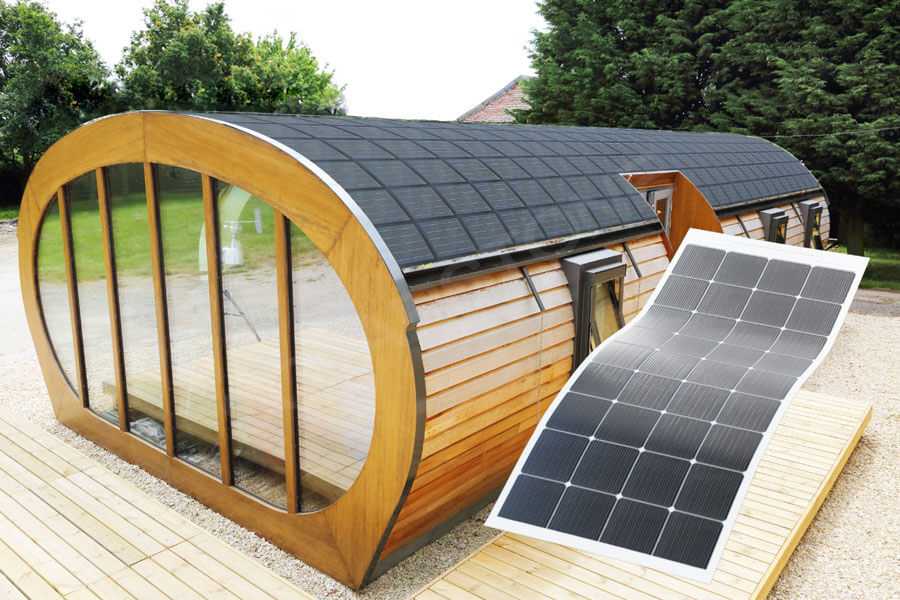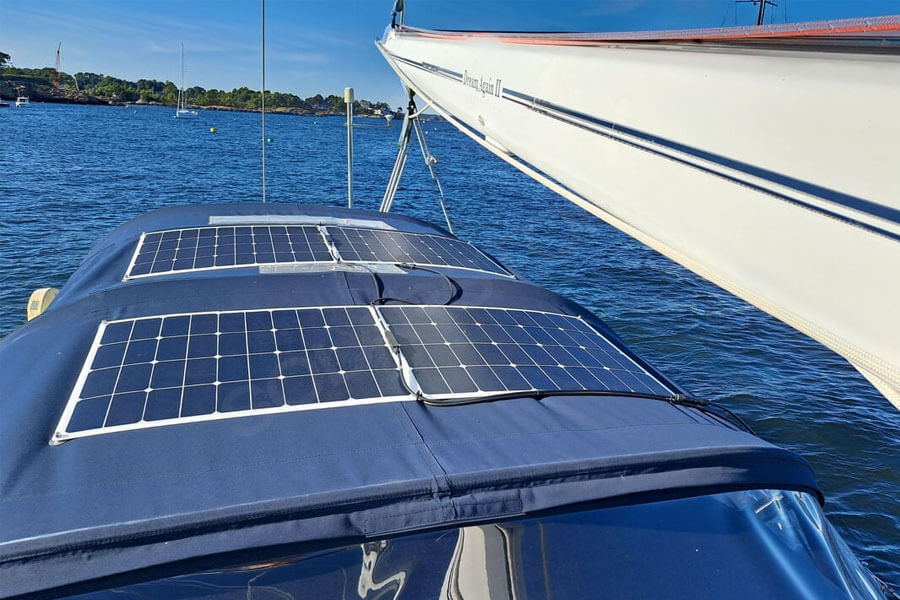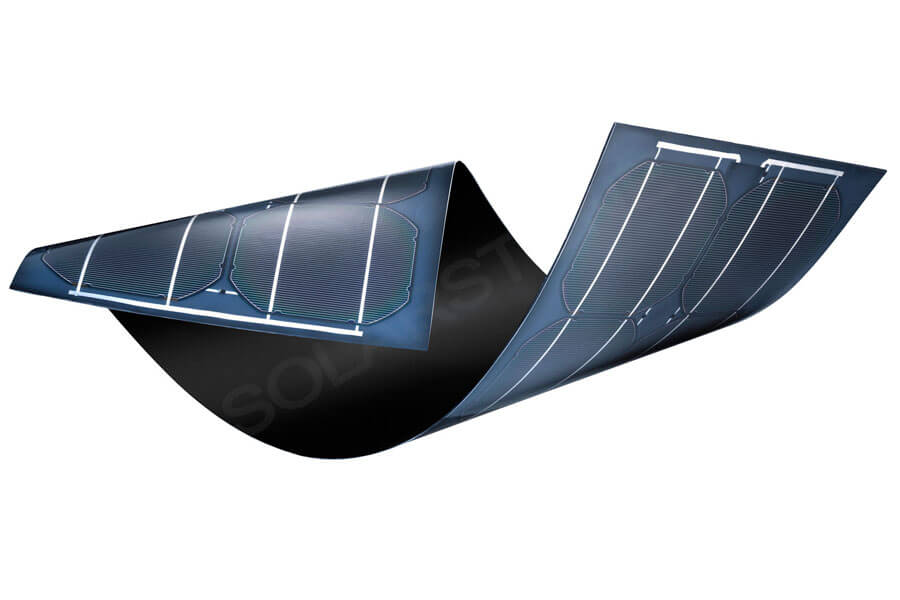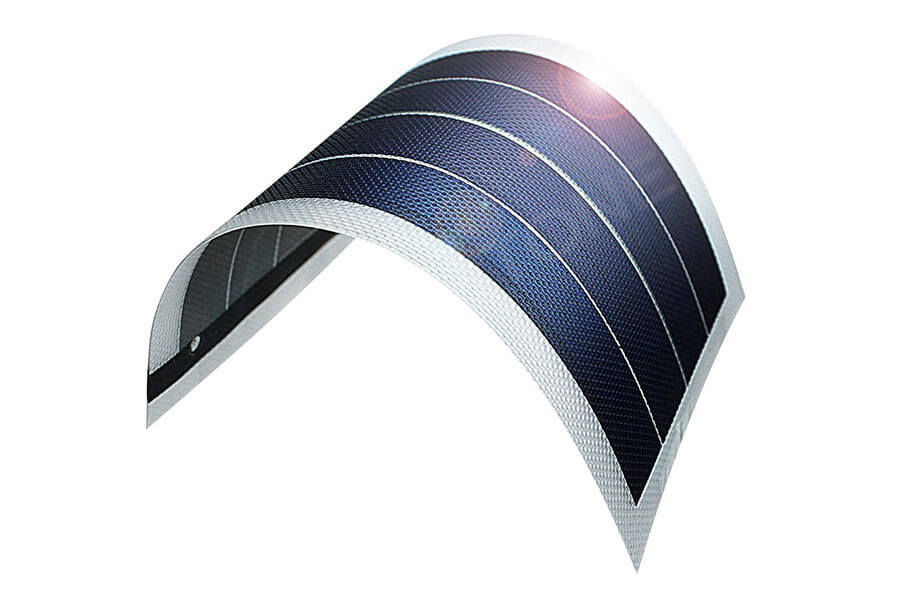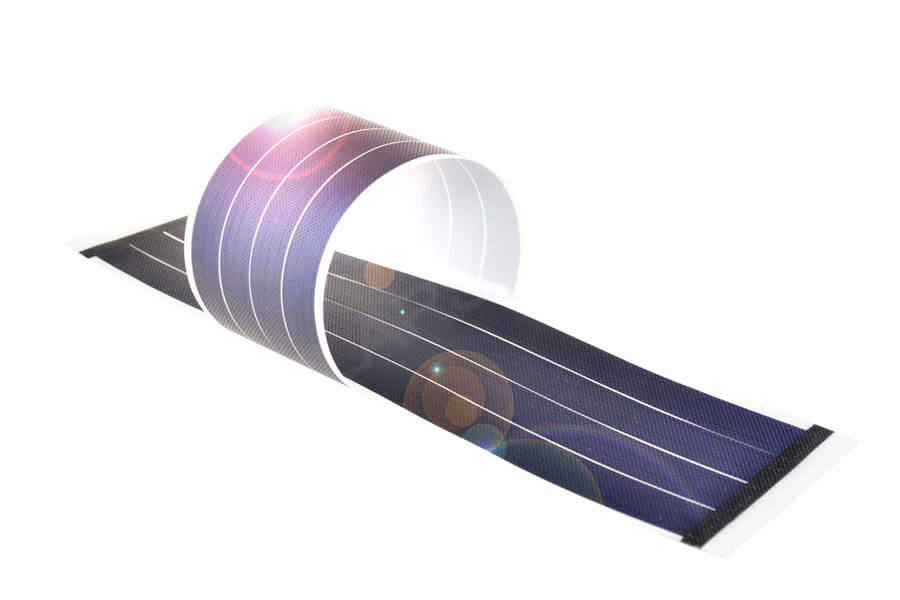(Silicon) crystal flexible solar panels
These are the most commonly used silicon materials in the market, made from the same silicon materials as traditional panels. Here, the solar “panel” consists of many crystals and photovoltaic flexible solar cells.
If the underlying material is silicon, why are traditional solar panels flat and bulky, while flexible solar panels thin and light?
This is because they are stacked differently in thickness. For example, for lightweight solar panels, silicon wafers are cut into several micrometers( μ m) Thick gives them the illusion of flexibility, as they can bend to 30 degrees.
In fact, this 30 degree flexibility is sufficient to easily install it on curved surfaces, including ships. They are also often used as flexible solar panels for RVs (also known as caravan solar panels). In contrast, the chips in traditional solar panels are cut into about 200 pieces μ M thick, making them thicker and heavier.
Next, place a thin layer of flexible silicon panel between protective layers (usually made of plastic) to extend durability and portability. Compare it with the thick glass layer used in rooftop solar panels.
It can be imagined that these lightweight solar panels can generate a limited amount of solar energy, so there are varieties of 50 watts, 100 watts, 200 watts, and 300 watts.
However, they have a reasonable efficiency of converting light into energy (15% -25%), so they can serve as energy reservoirs to power your RV during camping trips, boats/yachts, and even most electronic devices, when you find yourself accidentally disconnected from the power grid. Therefore, they are widely used in the marine industry (including fishing boats).
Thin film flexible solar panels
This is a relatively emerging technology where photovoltaic materials are printed or pasted on thin surfaces (including cloth, thick paper, aluminum plates, etc.).
Without the protection of silicon, they are considered far less durable than their crystalline counterparts. However, this is still a constantly evolving technology, so many things may happen in the future.
The main advantage of using thin portable solar panels is their strong flexibility. They can be rolled up for storage, making them perfect for camping trips, and you may not care if they last for a few years. This also makes them very lightweight, with some products weighing only 1.8kg.


